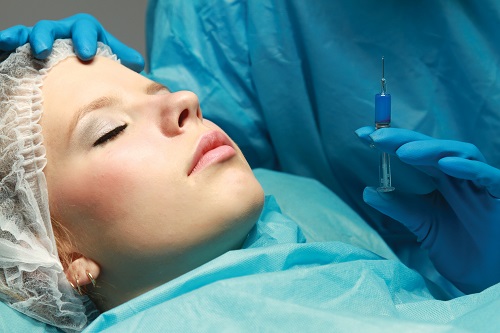Plastic surgery is a medical specialty concerned with the correction or restoration of form and function. Though cosmetic or aesthetic surgery is the best-known kind of plastic surgery, most plastic surgery is not cosmetic: plastic surgery includes many types of reconstructive surgery, hand surgery, microsurgery, and the treatment of burns.
Plastic surgery is a broad field, and may be subdivided further.
Cosmetic
Aesthetic surgery is an essential component of plastic surgery. Plastic surgeons use cosmetic surgical principles in all reconstructive surgical procedures as well as isolated operations to improve overall appearance.
The most prevalent aesthetic/cosmetic procedures include:
- Abdominoplasty (“tummy tuck”): reshaping and firming of the abdomen
- Blepharoplasty (“eyelid surgery”): reshaping of the eyelids or the application of permanent eyeliner, including Asian blepharoplasty
- Phalloplasty (“penile liposuction”) : construction (or reconstruction) of a penis or, sometimes, artificial modification of the penis by surgery, often for cosmetic purposes
- Mammoplasty:
- Breast augmentations (“breast implant” or “boob job”): augmentation of the breasts by means of fat grafting, saline, or silicone gel prosthetics, which was initially performed to women with micromastia
- Reduction mammoplasty (“breast reduction”): removal of skin and glandular tissue, which is done to reduce back and shoulder pain in women with gigantomastia and/or for psychological benefit men with gynecomastia
- Mastopexy (“breast lift”): Lifting or reshaping of breasts to make them less saggy, often after weight loss (after a pregnancy, for example). It involves removal of breast skin as opposed to glandular tissue
- Buttock augmentation (“butt implant”): enhancement of the buttocks using silicone implants or fat grafting (“Brazilian butt lift”) and transfer from other areas of the body
- Buttock lift: lifting, and tightening of the buttocks by excision of redundant skin
- Chemical peel: minimizing the appearance of acne, chicken pox, and other scars as well as wrinkles (depending on concentration and type of agent used, except for deep furrows), solar lentigines (age spots, freckles), and photodamage in general. Chemical peels commonly involve carbolic acid (Phenol), trichloroacetic acid (TCA), glycolic acid (AHA), or salicylic acid (BHA) as the active agent.
- Labiaplasty: surgical reduction and reshaping of the labia
- Lip enhancement: surgical improvement of lips’ fullness through enlargement
- Rhinoplasty (“nose job”): reshaping of the nose
- Otoplasty (“ear surgery”/”ear pinning”): reshaping of the ear, most often done by pinning the protruding ear closer to the head.
- Rhytidectomy (“face lift”): removal of wrinkles and signs of aging from the face
- Browplasty (“brow lift” or “forehead lift”): elevates eyebrows, smooths forehead skin
- Midface lift (“cheek lift”): tightening of the cheeks
- Chin augmentation (“chin implant”): augmentation of the chin with an implant, usually silicone, by sliding genioplasty of the jawbone or by suture of the soft tissue
- Cheek augmentation (“cheek implant”): implants to the cheek
- Orthognathic Surgery: manipulation of the facial bones through controlled fracturing
- Fillers injections: collagen, fat, and other tissue filler injections, such as hyaluronic acid
- Laser Skin Rejuvenation or Resurfacing:The lessening of depth in pores of the face
- Liposuction (“suction lipectomy”): removal of fat deposits by traditional suction technique or ultrasonic energy to aid fat removal
- Brachioplasty (“Arm lift”): reducing excess skin and fat between the underarm and the elbow
Burn
Burn surgery generally takes place in two phases. Acute burn surgery is the treatment immediately after a burn. Reconstructive burn surgery takes place after the burn wounds have healed.
Micro
Microsurgery is generally concerned with the reconstruction of missing tissues by transferring a piece of tissue to the reconstruction site and reconnecting blood vessels. Popular subspecialty areas are head and neck reconstruction, hand surgery/replantation, and brachial plexus surgery.
Craniofacial
Craniofacial surgery is divided into pediatric and adult craniofacial surgery. Pediatric craniofacial surgery mostly revolves around the treatment of congenital anomalies of the craniofacial skeleton and soft tissues, such as cleft lip and palate, craniosynostosis, and pediatric fractures. Adult craniofacial surgery deals mostly with fractures and secondary surgeries (such as orbital reconstruction) along with orthognathic surgery. Craniofacial surgery is an important part of all plastic surgery training programs, further training and subspecialisation is obtained via a craniofacial fellowship.
Oral and maxillofacial surgery is surgery to treat many diseases, injuries and defects in the head, neck, face, jaws and the hard and soft tissues of the oral (mouth) and maxillofacial (jaws and face) region.
Hand
Hand surgery is concerned with acute injuries and chronic diseases of the hand and wrist, correction of congenital malformations of the upper extremities, and peripheral nerve problems (such as brachial plexus injuries or carpal tunnel syndrome). Hand surgery is an important part of training in plastic surgery, as well as microsurgery, which is necessary to replant an amputated extremity. The Hand surgery field is also practiced by orthopedic surgeons and general surgeons (see Hand surgeon). Scar tissue formation after surgery can be problematic on the delicate hand, causing loss of dexterity and digit function if severe enough.
Pediatric
Children often face medical issues very different from the experiences of an adult patient. Many birth defects or syndromes present at birth are best treated in childhood, and pediatric plastic surgeons specialize in treating these conditions in children. Conditions commonly treated by pediatric plastic surgeons include craniofacial anomalies, cleft lip and palate and congenital hand deformities.


